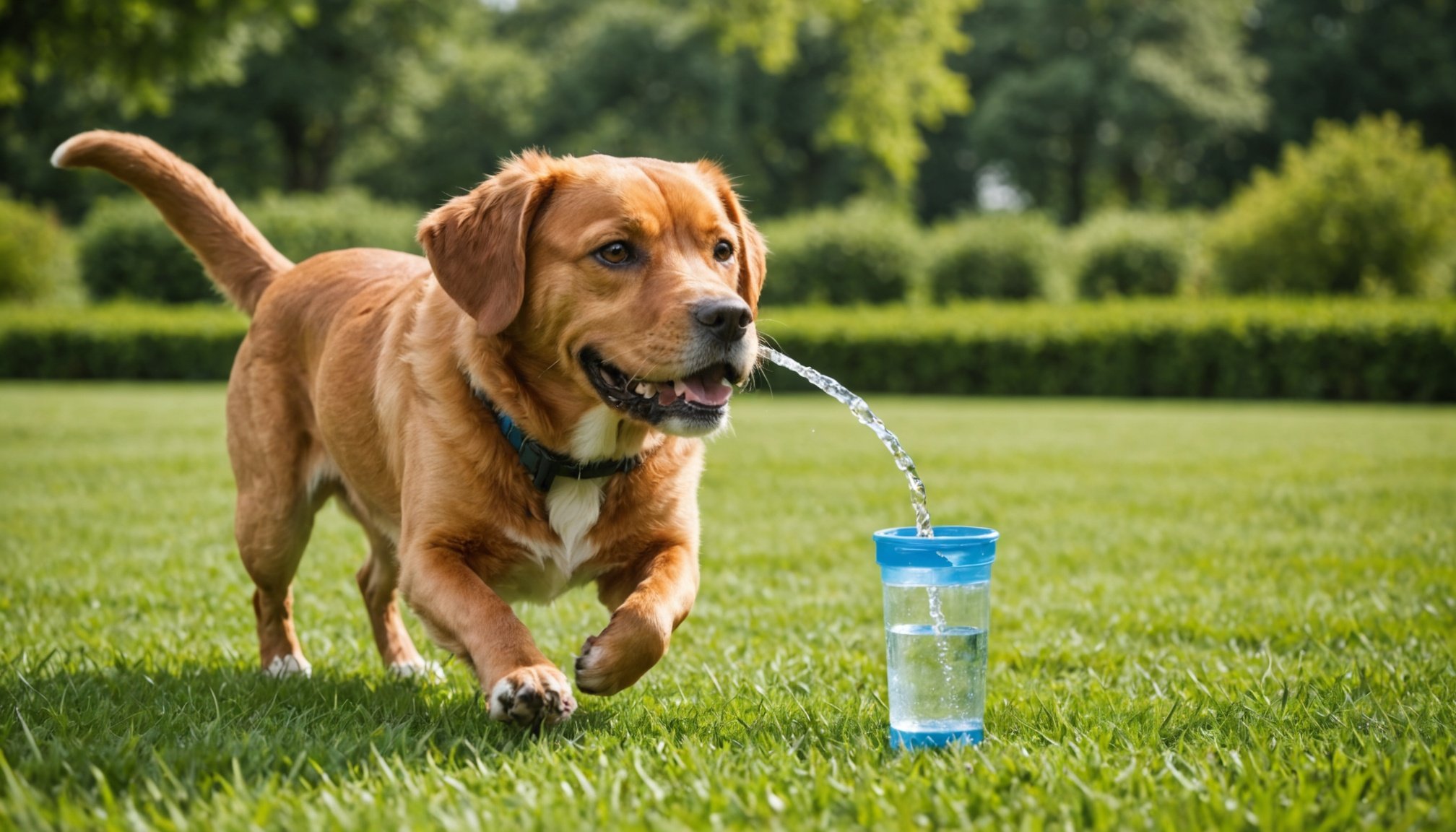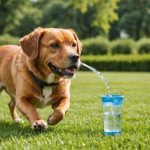As the temperatures rise during summer, ensuring the hydration of your pets becomes increasingly crucial. Dogs and other pets can easily suffer from dehydration, especially in the hot months when they are more active and exposed to heat. Monitoring your dog’s hydration levels is essential for their overall health and well-being. In this article, we will explore practical ways to keep your furry friends cool and hydrated, providing clear guidelines to help you manage their needs during heat.
Understanding the Signs of Dehydration in Dogs
Recognizing the signs of dehydration in dogs is crucial for timely intervention. As a responsible pet owner, you should familiarize yourself with these symptoms to ensure your dog’s health is not compromised during the summer months.
In parallel : How can you provide mental stimulation for your parakeet at home?
Common signs of dehydration include excessive panting, dry gums, lethargy, decreased skin elasticity, and loss of appetite. If your dog is panting heavily, especially after play or exercise, it may indicate that they are struggling to cool down and are at risk of dehydration. Check their gums; if they are dry or sticky, this is another red flag.
You can also perform a simple test to check your dog’s skin elasticity. Gently pinch the skin on the back of their neck or between their shoulder blades. If the skin does not quickly return to its normal position, your dog may be dehydrated.
Also read : Essential uk wildflowers for honeybee health: your ultimate guide to nutritional boosts
Being aware of these signs allows you to act quickly, providing your dog with fresh water and potentially cooling them down with a wet cloth or a dip in a kiddie pool. Monitoring your dog closely during hot weather ensures that any signs of dehydration are addressed promptly, safeguarding their health and comfort.
How to Provide Fresh Water for Your Dog
Providing fresh water for your dog is vital during hot weather. Make sure your pet has constant access to clean, cool water throughout the day. It’s essential to check their water bowl regularly, especially if they are drinking more than usual due to the heat.
Consider investing in a water fountain, as many dogs prefer drinking from running water. This can encourage them to stay hydrated, as dogs are often more inclined to drink when the water is fresh and flowing. Additionally, always keep a portable water bottle handy when you take your dog out for walks or trips to the park. This proactive approach will allow you to offer refreshment whenever your dog needs it.
During summer, you might also want to add some variety to your dog’s hydration routine. You can provide water mixed with low-sodium broth or offer ice cubes made from broth as a treat. This not only keeps them hydrated but can also be a refreshing snack on a hot day.
Remember to avoid letting your dog drink from puddles or stagnant water, as this can pose health risks. Ensuring your dog has access to fresh water is one of the simplest yet most effective ways to keep them hydrated and cool during the warm months.
Foods That Promote Hydration
In addition to ensuring your dog has access to fresh water, you can also provide foods that help keep them hydrated. Certain fruits and vegetables have high water content and can be included in your dog’s diet during the summer to aid their hydration.
Watermelon is a great option; its high water content makes it a perfect treat for hot days. Just be sure to remove the seeds and rind before offering it to your dog. Cucumber is another excellent choice, as it is low in calories and has a high water content. It can be sliced and served fresh, or even frozen into ice cubes for a refreshing snack.
Other hydrating foods include blueberries, strawberries, and cantaloupe, all of which can be given as treats or mixed into their regular food. These fruits not only provide essential hydration but also deliver vitamins and antioxidants beneficial for your dog’s overall well-being.
Keep in mind that any new food should be introduced gradually to avoid upsetting your dog’s stomach. Always consult with your veterinarian if you have concerns about your dog’s diet or hydration, especially during summer. By incorporating hydrating foods into their meals, you can enhance your dog’s hydration levels and help them stay cool.
Creating a Cool Environment for Your Dog
Creating a cool environment for your dog is paramount during hot weather. Consider the areas where your dog spends most of their time. Ensure they have access to shade if they are outdoors and avoid leaving them outside during peak heat hours, typically between 10 a.m. and 4 p.m.
If your dog is an indoor pet, utilize fans or air conditioning to keep the environment comfortable. You can also create a cozy spot for your dog by setting up a cool, shaded area with a comfortable bed and plenty of fresh water nearby. This gives your dog a designated space to retreat when the heat becomes too much.
Another effective way to help your dog stay cool is by using cooling mats or vests. These products are designed to lower your dog’s body temperature and can be particularly beneficial during hot days. Wetting a towel and laying it down for your dog to lie on can also provide relief from the heat.
It’s essential to monitor your dog while they are outside, ensuring they do not overheat. Look for signs of distress, such as excessive panting or drooling, and bring them inside or to a cool area immediately. By implementing these strategies, you can create a safe and enjoyable environment for your dog during the summer months.
Monitoring your pet’s hydration during hot weather is essential for their overall health and well-being. By understanding the signs of dehydration, providing fresh water, incorporating hydrating foods, and creating a cool environment, you can ensure your dog remains comfortable and safe during the summer months. Remember that your vigilance plays a crucial role in preventing dehydration, so keep a close eye on your furry friend and enjoy the summer together!











